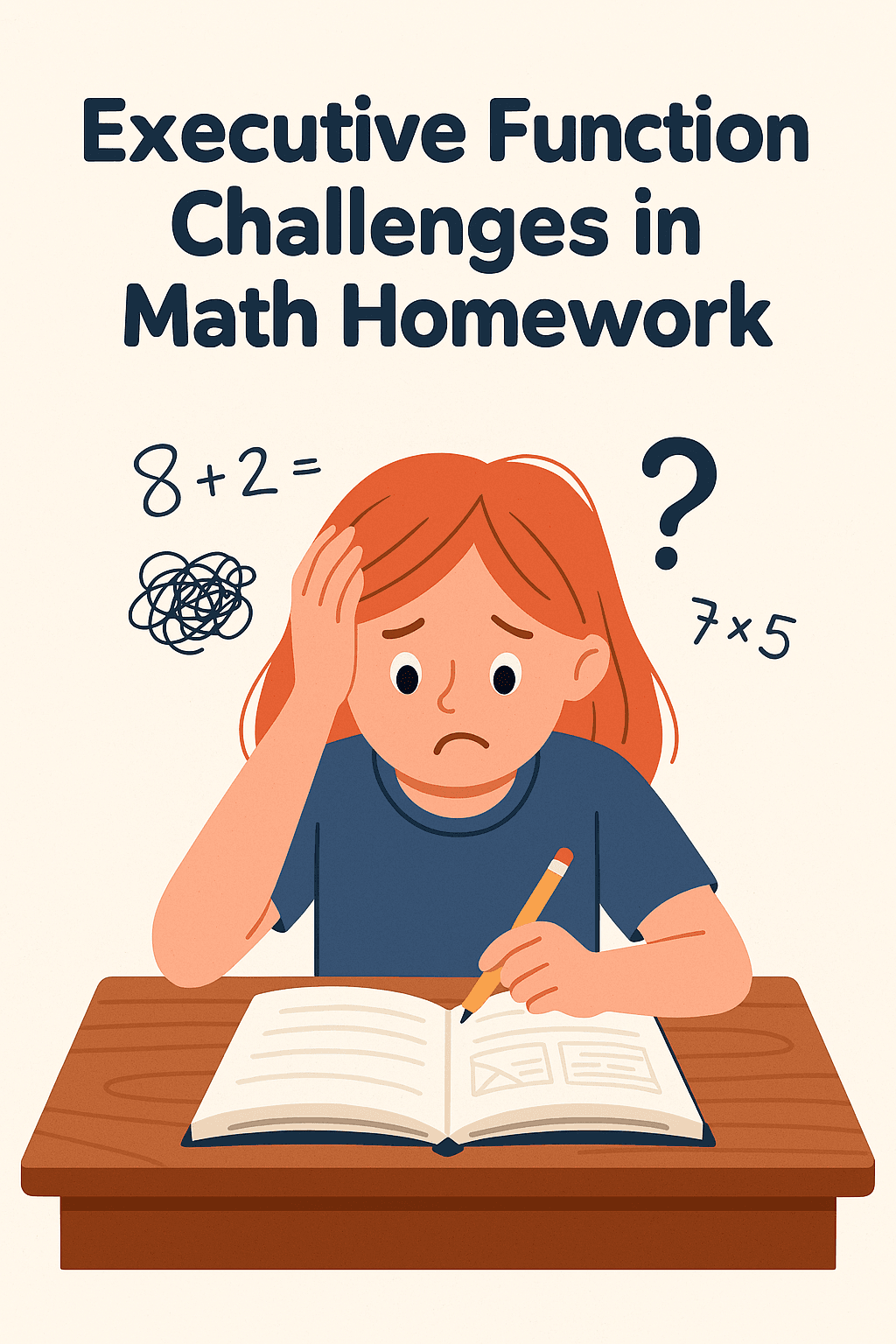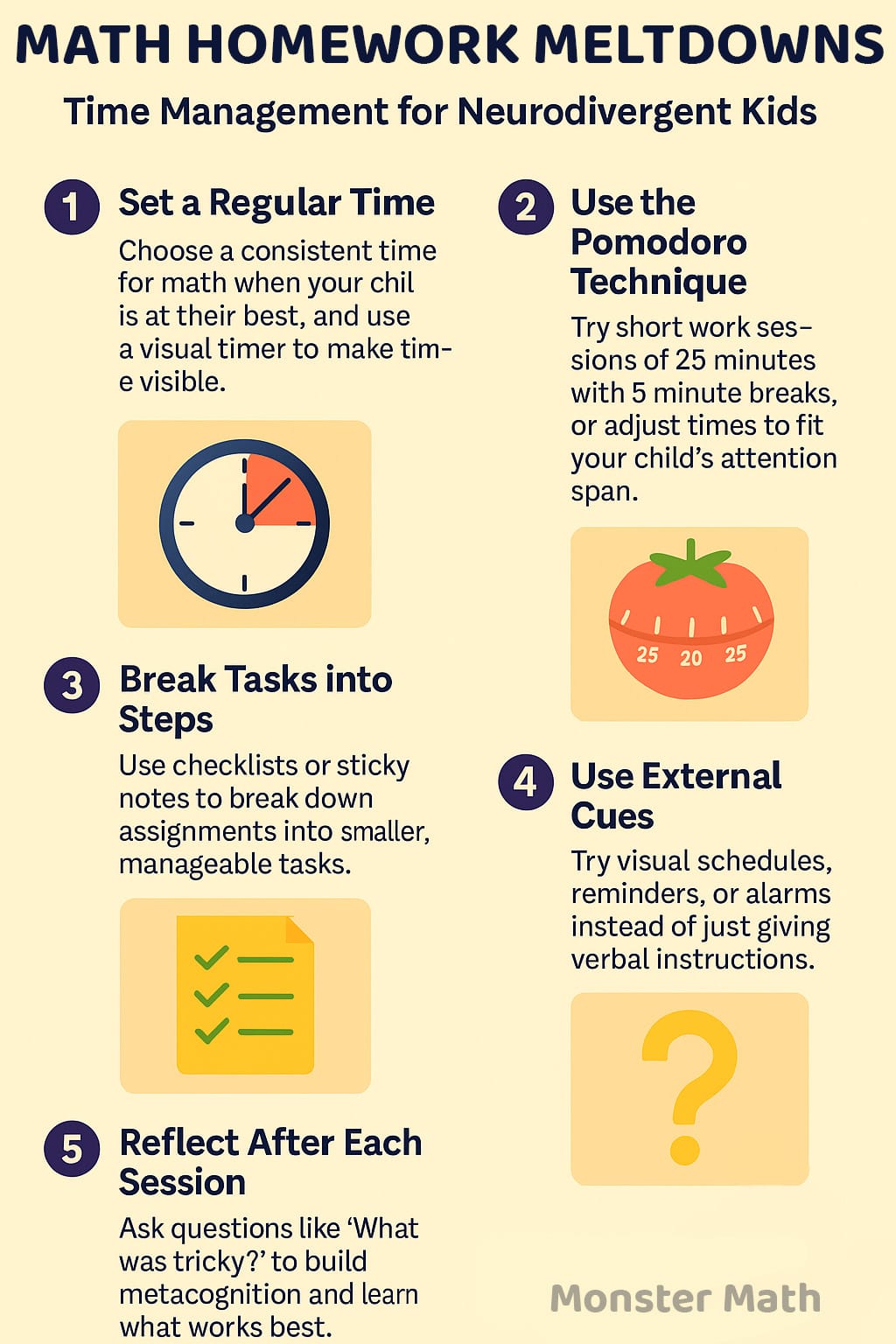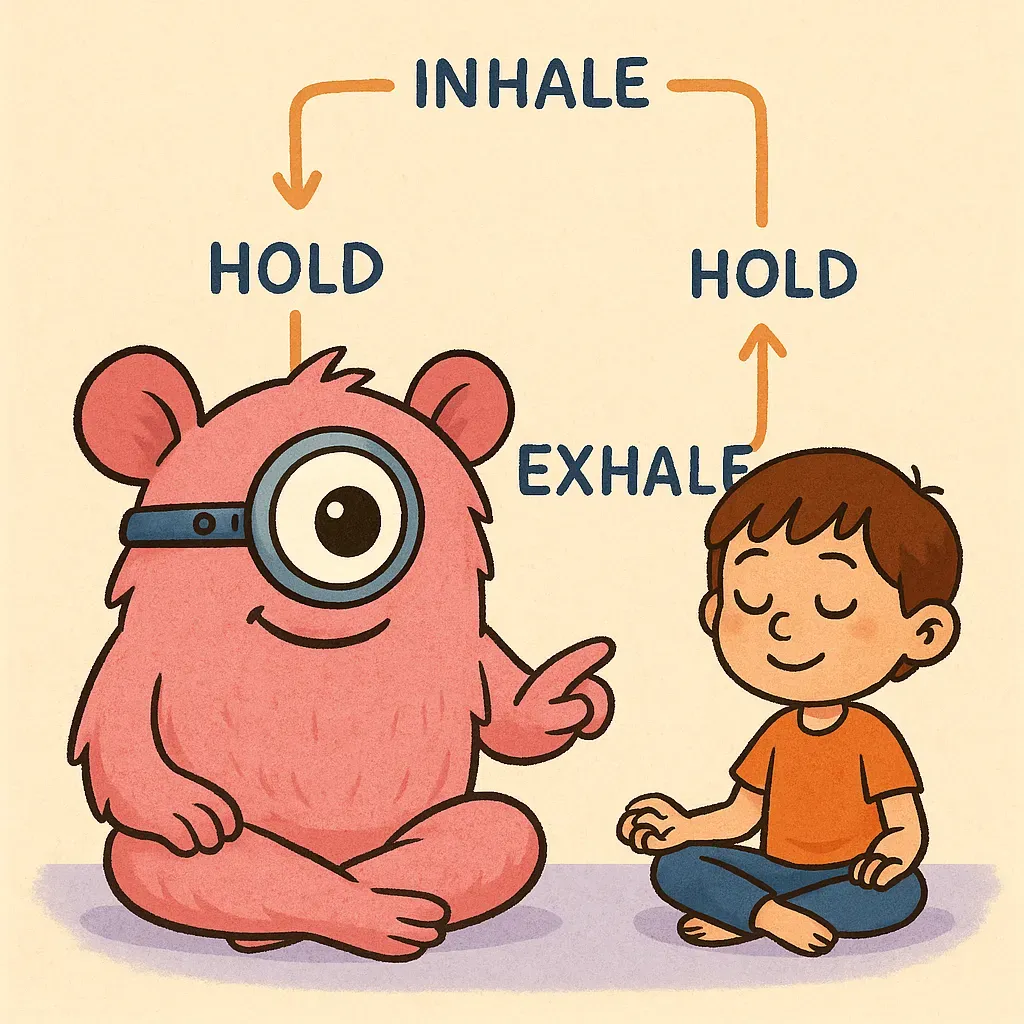If your child has ADHD or Autism - and math homework ends in tears more often than it ends in learning - you’re not alone.
For kids with ADHD, autism, or executive function challenges, math homework isn’t just hard - it’s often overwhelming. What most schools miss is this:
It’s not about the math. It’s about planning, time, and emotional regulation.
In fact, research shows that kids with executive dysfunction struggle most with task initiation, sustained attention, and working memory—all critical for solving even basic math problems (Barkley, 2012).
But here’s the good news: with the right time management strategies and structure, math homework can go from meltdown to manageable.
Why Executive Function Skills Matter in Math Homework
Executive function is like the brain’s “air traffic control system.” It manages:
- Starting a task (task initiation)
- Sticking with it (sustained attention)
- Breaking it down into steps (organization)
- Knowing how long it will take (time management)
Kids with ADHD and autism often have executive function delays of 30% or more compared to neurotypical peers (Thomas Brown, 2005).
So if your child resists homework, forgets instructions, or procrastinates endlessly—they’re not lazy. Their brain just needs more support.

1. Set a Regular Time for Math (and Stick to It)
Predictability reduces stress for neurodivergent kids. One study from the Journal of Attention Disorders found that structured routines helped improve academic performance in children with ADHD (Langberg et al., 2011).
Try this:
- Pick a consistent math time (e.g., right after a snack or movement break).
- Keep sessions short (15–30 minutes max).
- Use visual timers to make time visible—a key need for kids with “time blindness.”
2. Use the Pomodoro Technique (with Kid-Sized Tweaks)
The Pomodoro Technique (25 minutes on, 5 minutes off) isn’t just for productivity nerds—it’s backed by neuroscience. Short, focused bursts help kids sustain attention and reduce overwhelm (Mark et al., 2008).
For younger kids or kids with lower stamina:
- Try 10 minutes work / 5 minutes break.
- Use visuals (like coloring a star after each session).
- Pair effort with positive reinforcement (snack, movement, or screen time).
3. Break Tasks Into Visible, Concrete Steps
Executive dysfunction makes it hard to visualize the “next step.” That’s why worksheets feel impossible—they're just one big mental blob.
Instead:
- Put one problem per sticky note.
- Use checklists with real checkboxes.
- Say: “First we do 2 problems. Then break.”
This aligns with research on cognitive offloading—externalizing information to reduce mental strain (Risko & Gilbert, 2016).
4. Use External Cues (Not Just Verbal Reminders)
Telling your child “just focus” is like yelling “just swim!” at someone who doesn’t know how.
Instead, try these:
- Visual schedules for after-school routines
- Timers with alarms (e.g., Time Timer)
- Color-coded folders or bins
Studies show external environmental supports improve homework completion rates in students with ADHD (Langberg et al., 2013).
Note - avoid using timers to time solving the actual Math problems, or for the worksheets - that causes unnecessary stress. Use the timer just to time the sessions and breaks which adds a bit of structure.
5. Reflect After Each Session (Build Metacognition)
Reflection builds metacognition - the ability to think about thinking. It’s one of the most powerful tools for long-term academic growth.
Ask your child:
- What was tricky today?
- What helped you focus?
- What should we change tomorrow?
According to Harvard’s Center on the Developing Child, reflection supports cognitive flexibility and emotional regulation (Harvard, 2023).
When Things Still Fall Apart
Even with the best plan, some days will still fall apart. Your child may cry, resist, or shut down. That’s not failure - it’s feedback.
Stick with the routine. Celebrate effort, not perfection. Keep tools simple, repeatable, and visual. Over time, consistency builds safety, and safety opens the door to learning.
Your child isn’t behind. They just need a system that meets their brain where it is.
Especially if your child is on the Autism spectrum - you might also want to add some Math routines to support them.
A Word About What Monster Math Does Differently
At Monster Math, we design our tools for neurodivergent learners:
- Step-by-step practice that builds confidence
- Short, focused sessions with breaks
- Progress tracking that helps kids see their growth
We’re not trying to “fix” your child- we’re helping them find the system that works for them. So if you're looking for math time that's really fun and effective for your child, do consider Monster Math!
Final Checklist: Time Management for Math Homework (Executive Function - Friendly)

- ✅ Set a consistent math time
- ✅ Keep sessions short and predictable
- ✅ Use timers and visual cues
- ✅ Break tasks into bite-sized steps
- ✅ End each session with reflection
- ✅ Celebrate effort and keep routines flexible


